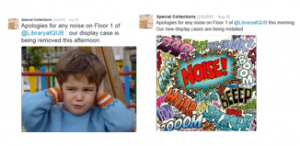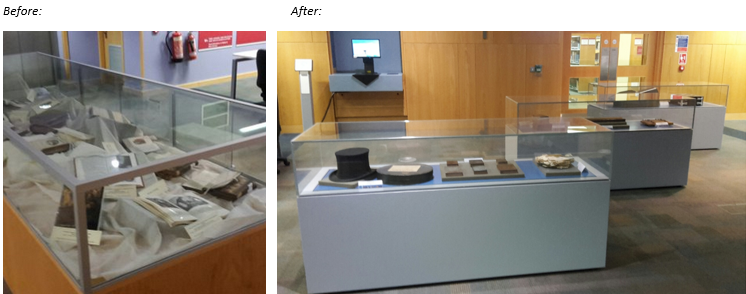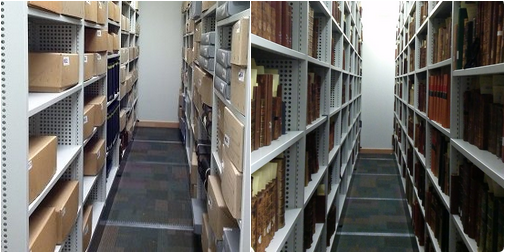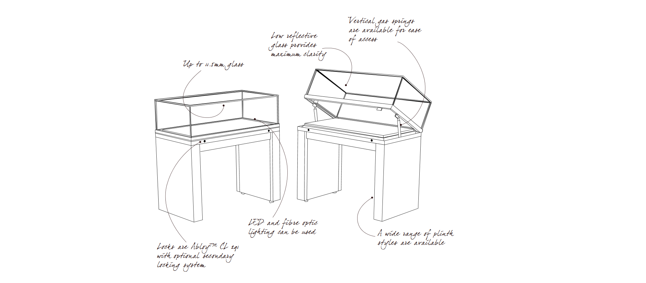Best case scenario!

As you may have noticed from our Twitter feed (or, indeed if you’ve been working on Floor One of the McClay Library) it’s been all change for us this week, as we have been upgrading the Special Collections’ display cases.

Like all Special Collections, we operate from a closed store, meaning our collections can’t be browsed openly in the same way as most of the rest of the library’s holdings, but are instead kept in a secure, climate-controlled environment accessible only to Special Collections’ staff. (That’s where we scurry off to fetch books or manuscripts whenever you order material at our enquiry desk!)

Our display space is important therefore, as it gives us a chance to showcase our holdings to a wider audience, including anyone using the library. Exhibitions are changed regularly and include themed seasonal displays (e.g. Hallowe’en or Christmas), displays in support of conferences or events being held in Queen’s, and general interest displays curated by members of the Special Collections and Archives team.
Our three new display cases have a high level of both security and environmental control, enabling library users and visitors to get a close-up view of a much wider range of our materials than we could display previously. Unlike retail showcases (which tend to be cheap, cheerful and not too concerned about their contents’ long-term exposure to volatile vapours and chemicals!) museum-quality display cases need to be constructed from conservation-quality materials.
Schematic of display cases, courtesy of Clicknetherfield:
In our case, this means 11.5mm low iron anti-bandit laminated glass (which provides UV filtration and minimises colour distortion) and an aluminium alloy and steel base frame. The display cases have an air exchange rate of c. 0.5 air changes per day (which helps to buffer external environmental conditions and maintain a stable temperature and humidity level in the interior) and gas spring assisters enable easy access to the hinged cases, which are opened using glazing suckers. The new display cases are slightly lower than our previous display case, giving a much greater level of accessibility to our exhibits.
The inaugural exhibition in the new display cases highlights some interesting treasures from our collections, including a bill spike which belonged to Irish novelist and literary critic Forrest Reid, a stunning facsimile edition of The Book of Kells, composer and conductor Hamilton Harty’s collapsible Opera Hat, and a palm leaf manuscript containing a copy of Guṇṇantarac nisya by Shin Sāravaṃsa, written in Pali (Burmese round script) and Burmese.

Why not come in and check it out?!




